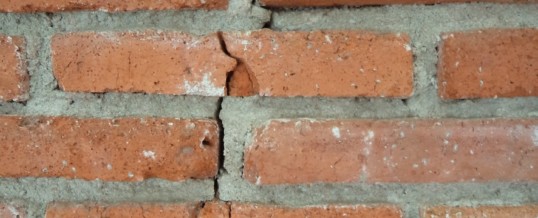
It doesn’t matter what you do. Cracks will eventually form in your home’s foundation. In the end, the important thing is that you handle these cracks in an appropriate manner.
The question is: what constitutes “appropriate”? That depends. So, to help you understand, we’re going to discuss the ins and outs of foundation cracks, covering everything from their causes to their types, and more. Keep reading to learn more.
How Do Foundation Cracks Arise?
Foundation cracks arise from a variety of sources, many of which can be eradicated. The most common of these sources include the following.
Poor Drainage
One of the most common causes of foundation cracks is poor drainage. If a home’s drainage system doesn’t prevent groundwater from pushing up against the outside of its foundation, said foundation will undoubtedly break down over time. This will eventually lead to cracks.
Fixing a drainage system can be as easy as installing downspout extenders. However, in some cases, more intensive measures will need to be taken.
Improper Placement
One of the biggest mistakes a home builder could make is placing a foundation improperly. Generally speaking, if a foundation is placed in a valley, water will run down into it and cause deterioration. Cracks will soon follow.
To eradicate this problem, you’ll have to reshape the lay of your land, essentially eliminating the hill that leads down to your home.
Inadequate Curing
Another reason for why a foundation might crack is that it was cured inadequately. If a home builder takes measures to make a foundation cure more quickly than it otherwise would, it could possess structural inconsistencies. These inconsistencies could result in cracking over time.
Unfortunately, there’s little you can do to reverse this problem. Your only legitimate option is to have cracks fixed as they form.
Antiquated Materials
These days, the majority of home foundations are made out of poured concrete or concrete block. In the old days, however, stone and lime were often used instead. Unfortunately, there’s a problem with stone and lime: they’re vulnerable to cracking. As such, old foundations tend to form cracks more frequently than modern foundations.
Again, there’s little you can do to reverse this problem. The most you can do is make repairs as needed.
Shifting Soil
In some areas, the soil will expand and contract based on the temperature. If you live in one of these areas, your foundation could be adversely affected. The more the soil shifts around your foundation, the more stress it will place on it, eventually leading to cracks.
Again, there’s not much you can do about this problem. If it’s happening to you, your only realistic option is to fix cracks as they form.
Types of Foundation Cracks
Foundation cracks come in many different forms, with some forms being more severe than others. Below, we’re going to get into the specifics of each.
Vertical Cracks
Individual cracks that run in an up-down manner are known as vertical cracks. Generally caused by the natural settling of the foundation, they are not a huge cause for concern. In fact, they exist in almost every foundation in existence.
That being said, they can still allow in both bugs and moisture. As such, it’s a good idea to have them repaired.
Horizontal Cracks
Individual cracks that run in a left-right manner are known as horizontal cracks. These cracks are always a cause for concern, regardless of their size. However, the bigger they are, the more severe they become.
Horizontal cracks are caused by external pressure, whether it be from an improperly laid foundation, poor drainage, shifting soil, or otherwise. If you have a horizontal crack in your foundation, you need to have it fixed. The longer you allow it to remain, the bigger and more severe it will become.
If allowed to remain for years, horizontal cracks can cause your foundation to cave in entirely. It costs thousands of dollars to repair a caved foundation, so you don’t want this to happen.
Diagonal Cracks
Diagonal cracks are somewhere between horizontal and vertical cracks, tilting left to right and up to down. While they’re more severe than vertical cracks, they’re nowhere near as severe as horizontal cracks. Caused by either improper foundation placement or shifts in soil, they tend to grow worse over time.
Though diagonal cracks are not as severe as horizontal cracks, they can still cause structural damage. Not to mention, they provide a welcome passageway through which water and insects can pass. Therefore, if you have diagonal cracks in your foundation, you’re advised to have them fixed as soon as possible.
Spalling Cracks
Spalling cracks occur on the surface of a foundation and generally take on a flaking aesthetic. In most cases, they form as a result of water damage.
You don’t see a lot of spalling cracks these days. Why? Because they’re most common in antiquated materials such as stone and lime.
Map Cracks
Map cracks are a series of cracks that take the appearance of a world map. They’re positioned close together, often connecting in clusters.
In most cases, map cracks are not a cause for concern; They’re almost purely cosmetic. That being said, if they start to grow bigger, you might want to have them inspected by a professional.
Need Help Repairing Foundation Cracks in Baltimore?
Now that you know a little something about foundation cracks, you might notice that the cracks in your foundation are troubling. If so, and if you’re in need of foundation crack repair in Baltimore, Maryland, Armored Basement Waterproofing has you covered.
Locally owned and operated, we’ve been serving the area for over 20 years. Well-versed in the foundation crack repair process, we’ll have your foundation ready to go in no time.
Contact us today to schedule an appointment!
ShareJAN
